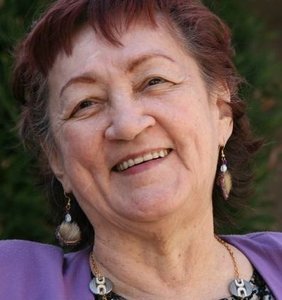Alberta Schenck Adams facts for kids
Alberta Daisy Schenck Adams (June 1, 1928 – July 6, 2009) was a brave teenager. She became a civil rights activist in Alaska. She fought for fair treatment for all people.
In 1944, she challenged unfair rules in Alaska. Her actions helped pass a law against discrimination in 1945. This was ten years before schools were desegregated in the US. It was also before Rosa Parks famously refused to give up her bus seat.
Contents
Early Life in Alaska
Alberta Schenck was born in Nome, Alaska, on June 1, 1928. Her father, Albert Schenck, was a white army veteran. Her mother, Mary Pushruk Schenck, was from the native Inupiat people.
When Alberta was young, many unfair rules existed in Alaska. Indigenous people often faced segregation. This meant they were kept separate from white people. Sometimes, non-white children could not even go to school. Some businesses openly said they only hired white employees.
Standing Up at the Theater
In 1944, Alberta was a high school student. She had a part-time job at the Alaska Dream Theatre in Nome. Part of her job was to make sure non-white customers sat in a special, separate area.
Alberta felt this was wrong. She complained to the theater manager and was fired. She then wrote an article about her experience. It was published in The Nome Nugget newspaper on March 3, 1944.
Later, Alberta returned to the theater with a white friend. They sat in the "Whites Only" section. The manager told them to move, but they refused. The police were called, and Alberta was arrested. She spent one night in jail. Her arrest made the local Inupiat community angry. They protested at the theater until she was released the next day.
A New Law for Equal Rights
Alberta was determined to make a change. She wrote a letter to Alaska's Governor, Ernest Gruening. She told him all about what happened at the theater.
The year before, the Governor had tried to pass a law against unfair treatment. But it had failed. Alberta's letter inspired him to try again. Her story was even shared during the government meetings. The Governor wrote back to Alberta. He promised that no one in Alaska would be treated that way again.
The new law was called the Alaska Equal Rights Act of 1945. It passed both parts of the government. Governor Gruening signed it into law on February 16, 1945. This law made it illegal to treat people differently based on their race in Alaska.
Legacy and Recognition
Alberta Schenck later married a man named Adams. She moved to California. She passed away on July 6, 2009.
Alberta Schenck's actions were a very important part of the Civil Rights Movement. Her courage helped make Alaska a fairer place for everyone.
In 2011, Alberta Schenck Adams was honored. She was added to the Alaska Women's Hall of Fame.
See also


